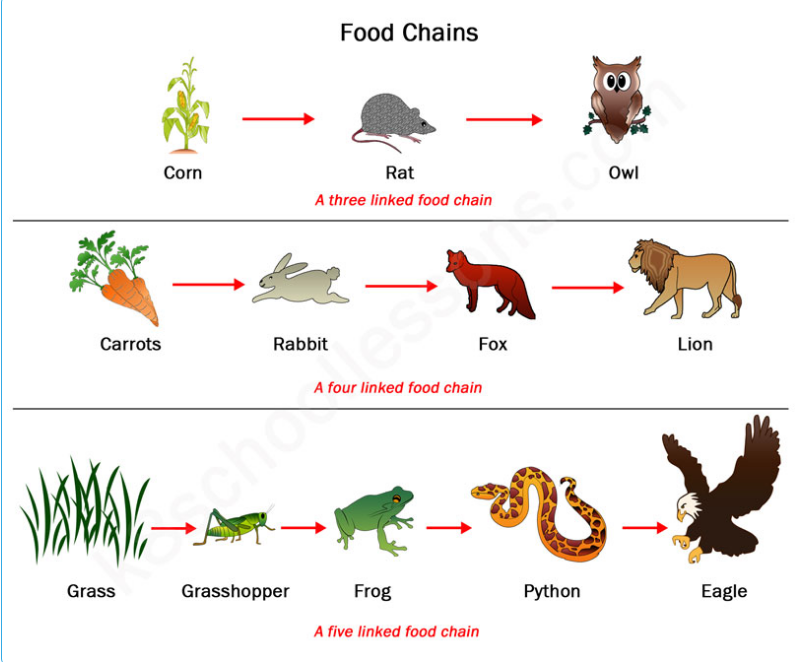a large group of ecosystems that have similar characteristics
Biome
living things
Biotic
A living thing that cannot make its own food and get their energy by eating food.
Consumer
This part of the food pyramid gets their energy from the sun, and makes its own food from raw materials and energy.
Producer
all the living and nonliving things that interact with one another in a given area
Ecosystem
Rain Forest
Non-living
Abiotic
a living thing that gets its energy by breaking down dead plants and animals. Fungi and bacteria are the most common.
Decomposer
A __________ shows how much energy is available for producers and consumers.
Food Chain
group of living things of different species found in an ecosystem
Community
Earth's largest biome where trees are few and far between and include prairies and savannas.
Grasslands
three examples of abiotic factors
answers vary (must be non-living)
Name an example of a producer and consumer
all animals are consumers, the plants are producers
Name the produces in all three food chains.

Corn, carrots and grass
all the members of the same type of organism living in an ecosystem
Population
These five bodies of water are examples of freshwater biomes.
streams, rivers, ponds, lakes and wetlands
Can something dead be biotic?
Yes
A fish that eats algae is a (first, second or third level) consumer.
First
Name the top predator an all three food chains.

Owl, Lion and Eagle
normal pattern of weather that occurs in an area over a long period of time
Climate
These are the three zones of the marine biome
Intertidal zone, Near-shore zone, and Open ocean zone
Two examples of:
Biotic and abiotic factors in a Temperate Forest
answer may vary
The difference between a food chain and a food web
__________ have the largest populations because they have the most energy available to them.
Producers
An area where an organism lives, grows and develops.
Habitat